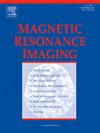整合MRI放射组学和临床数据用于乳腺癌血管侵袭的术前预测:一种深度学习方法。
IF 2
4区 医学
Q2 RADIOLOGY, NUCLEAR MEDICINE & MEDICAL IMAGING
引用次数: 0
摘要
背景:准确的术前预测乳腺癌血管侵犯对手术计划和患者管理至关重要。MRI放射组学在提高诊断精度方面显示出希望。本研究旨在评估使用深度学习方法将MRI放射学特征与临床数据相结合来预测乳腺癌患者血管侵犯的有效性。方法:对102例经手术病理证实的浸润性乳腺癌患者进行回顾性分析。使用MR750 3.0 T作为检查设备,受试者按照标准乳房位置和顺序进行检查。采用两个选定的b值进行弥散加权成像(DWI),分别为0和1000 s/mm2。注射造影剂后,进行六期动态扫描,并使用VIBRANT序列获得延迟期矢状图像。从MRI图像中提取纹理特征,并使用方差阈值、相关滤波和逻辑回归选择关键的放射学和临床特征。结合这些特征建立了一个预测模型,并通过灵敏度、特异性和曲线下面积(AUC)指标评估其性能。结果:基于单个MRI序列或临床数据的单变量模型显示出不同的诊断性能。相比之下,将放射学特征与临床资料相结合的多因子模型具有更高的准确性,AUC为0.829,敏感性为76.9% %,特异性为83.3 %。结论:MRI放射组学与临床资料的结合可提高乳腺癌血管浸润的术前预测。这种方法可以提高诊断的准确性,为临床决策和个性化治疗策略提供有价值的见解。本文章由计算机程序翻译,如有差异,请以英文原文为准。
Integration of MRI radiomics and clinical data for preoperative prediction of vascular invasion in breast cancer: A deep learning approach
Background
Accurate preoperative prediction of vascular invasion in breast cancer is crucial for surgical planning and patient management. MRI radiomics has shown promise in enhancing diagnostic precision. This study aims to evaluate the effectiveness of integrating MRI radiomic features with clinical data using a deep learning approach to predict vascular invasion in breast cancer patients.
Methods
A retrospective analysis was conducted on 102 patients with invasive breast cancer confirmed by surgical pathology. Using the MR750 3.0 T as the examination device, the subject underwent the examination in standard breast positions and sequences. Diffusion-weighted imaging (DWI) was performed with two selected b-values, specifically 0 and 1000 s/mm2. Following the injection of the contrast agent, dynamic scans were conducted across six phases, and delayed phase sagittal images were acquired using the VIBRANT sequence. Texture features were extracted from MRI images, and key radiomic and clinical features were selected using variance thresholding, correlation filtering, and logistic regression. A predictive model was developed combining these features, and its performance was evaluated through sensitivity, specificity, and area under the curve (AUC) metrics.
Results
The univariate models based on individual MRI sequences or clinical data demonstrated variable diagnostic performance. In contrast, the multifactorial model that combined radiomic features with clinical data achieved significantly higher accuracy, with an AUC of 0.829, sensitivity of 76.9 %, and specificity of 83.3 %.
Conclusion
Integrating MRI radiomics and clinical data enhances the preoperative prediction of vascular invasion in breast cancer. This approach can improve diagnostic accuracy, providing valuable insights for clinical decision-making and personalized treatment strategies.
求助全文
通过发布文献求助,成功后即可免费获取论文全文。
去求助
来源期刊

Magnetic resonance imaging
医学-核医学
CiteScore
4.70
自引率
4.00%
发文量
194
审稿时长
83 days
期刊介绍:
Magnetic Resonance Imaging (MRI) is the first international multidisciplinary journal encompassing physical, life, and clinical science investigations as they relate to the development and use of magnetic resonance imaging. MRI is dedicated to both basic research, technological innovation and applications, providing a single forum for communication among radiologists, physicists, chemists, biochemists, biologists, engineers, internists, pathologists, physiologists, computer scientists, and mathematicians.
 求助内容:
求助内容: 应助结果提醒方式:
应助结果提醒方式:


